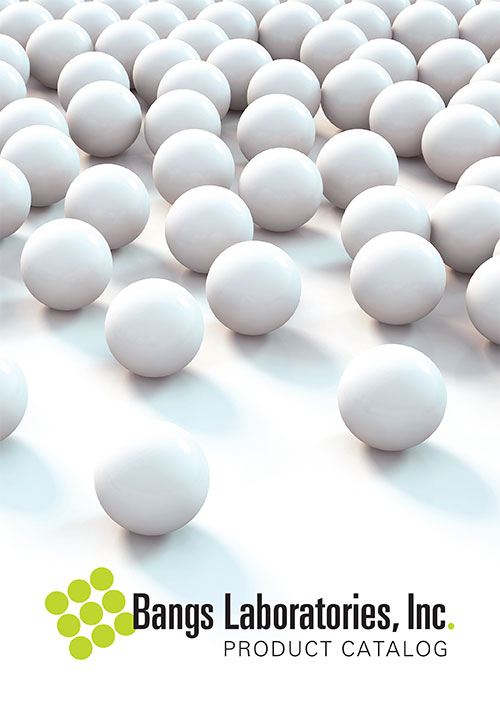We provide all of your
industrial solution

POLYSTYRENE MICROSPHERES
Polystyrene microspheres present a flexible platform for applications in diagnostics and bioseparations. They may be coated with recognition molecules, such as antibodies, antigens, peptides, or nucleic acid probes, and can be loaded with hydrophobic dyes and other compounds. Unmodified polymer spheres also find extensive use as standards for instrument set-up and calibration. Available in diameters ranging from 20nm to 200µm, products exhibit excellent size uniformity.
Plain polystyrene microspheres are ideal for protein adsorption, and have been utilized in a range of diagnostic tests and assays. Surface modified microspheres are available with carboxyl or primary amine groups for covalent ligand attachment. Affinity binding systems offer simple and efficient ligand attachment. Coatings of Fc binding proteins are able to orient antibodies for optimal activity, and streptavidin offers extremely stable attachment of biotinylated molecules, such as proteins, peptides, and oligonucleotides.

SILICA MICROSPHERES
Inorganic supports, such as silica microspheres, have become increasingly important for a variety of applications. They offer the combined benefits of working with a bead platform and the unique properties of a silica substrate, including: flexibility, large specific surface area, improved binding kinetics over planar surfaces, robust statistics, flexible silanization chemistries, unique refractive index and density, low autofluorescence, low nonspecific binding of many biomolecules, hydrophilicity, and easy manipulation.
Bangs offers a range of bead sizes (from ~0.15µm-5µm) to meet the requirements of a variety of applications. And, if we don't have a suitable product, let us know. Customization is always an option!

MAGNETIC MICROSPHERES & PARTICLES
Superparamagnetic particles have been utilized extensively in diagnostic and other research applications for the capture of biomolecules and cells. They confer a number of benefits, including ease of separation and suitability for automation. Magnetic particle-based diagnostic assays demand the highest performance in terms of physical handling, ligand binding characteristics, and signal-to-noise ratios. Bead composition directly impacts settling and magnetic separation profiles, which have implications for assay parameters such as incubation times for binding and elution steps, buffer changes, etc. Most importantly, the composition impacts specific / nonspecific binding characteristics, and background signal arising from the particle itself. These factors have a direct impact on the sensitivity and dynamic range of the assay.
Read More
ACCESSORY REAGENTS
Bangs Laboratories offers a variety of accessory products for use in microparticle reagent development. The collection includes crosslinking reagents and surfactants, as well as solutions and buffers for microsphere coating and storage. These products complement our extensive catalog of polymer, silica, and magnetic microparticles, and also offer a convenient means to replenish individual components of coupling kits.
Read More
